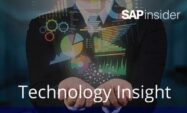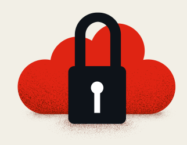SAP Infrastructure
Filter By
Browse By
- SAP Analytics and AI
- SAP Application Development and Integration
- All SAP Application Development and Integration
- SAP ABAP
- SAP ABAP Development Tools
- SAP ABAP Test Cockpit
- SAP API Management
- SAP BAPI
- SAP Basis
- SAP BRF
- SAP Business Application Studio
- SAP CMS
- SAP Design Studio
- SAP Development Tools
- SAP DevOps
- SAP EAI
- SAP EDI
- SAP Extension Suite
- SAP Fiori
- SAP Fiori Elements
- SAP Integration Suite
- SAP Low Code Application Development
- SAP Low Code Automation
- SAP Netweaver
- SAP Release Management
- SAP UI5
- SAP Web Application Server
- SAP Web IDE
- SAP Business Process Management
- SAP Center of Excellence
- SAP CIO
- SAP Customer Experience
- SAP Data and Data Management
- All SAP Data and Data Management
- SAP BW
- SAP BW/4HANA
- SAP Crystal Reporting
- SAP Data Archiving
- SAP Data Center
- SAP Data Governance
- SAP Data Integration
- SAP Data Migration
- SAP Data Quality
- SAP Data Services
- SAP Data Strategy
- SAP Data Visualization
- SAP Data Warehouse Cloud
- SAP DMS
- SAP Document Control
- SAP EIM
- SAP ETL
- SAP ETL Tools
- SAP HANA
- SAP HANA Administration
- SAP HANA Deployment Infrastructure
- SAP HANA Studio
- SAP Master Data
- SAP Master Data Governance
- SAP MDM
- SAP Enterprise Architect
- SAP Enterprise Asset Management
- SAP ERP
- SAP Finance
- All SAP Finance
- SAP Accounting
- SAP AR AP
- SAP Asset Accounting
- SAP Billing Systems
- SAP BPC
- SAP BRIM
- SAP Cash Management
- SAP Central Finance
- SAP Controlling
- SAP COPA
- SAP Cost Center Accounting
- SAP e-invoicing
- SAP FICO
- SAP Finance Automation
- SAP Financial Closing Cockpit
- SAP Financial Consolidation
- SAP Financial Planning
- SAP FX Risk
- SAP General Ledger
- SAP Global Tax Management
- SAP Hyperion
- SAP Order to Cash
- SAP Payment Processing
- SAP Profitability Analysis
- SAP Rebate Management
- SAP S/4HANA Finance
- SAP Universal Journal
- SAP Governance Risk and Compliance
- SAP Human Capital Management
- SAP Intelligent Technologies
- SAP Platform and Technology
- All SAP Platform and Technology
- SAP Business Technology Platform
- SAP Cloud Connector
- SAP Cloud Integration Platform
- SAP Cloud Migration
- SAP Cloud Platform
- SAP Cloud Providers
- SAP Cloud Strategy
- SAP Container Platform
- SAP Digital Asset Management
- SAP Digital Integration Hub
- SAP Digital Signature
- SAP HANA Enterprise Cloud
- SAP HEC
- SAP Hyperscalers
- SAP Infrastructure
- SAP Messaging
- SAP Smart Forms
- SAP Quality and Testing
- SAP Security
- SAP Spend Management
- SAP Supply Chain Management
- All SAP Supply Chain Management
- SAP APO
- SAP Asset Management
- SAP Business Network
- SAP Digital Manufacturing Cloud
- SAP Digital Twin
- SAP EWM
- SAP IBP
- SAP Inventory Management
- SAP Label Printing
- SAP Logistics
- SAP Manufacturing
- SAP Manufacturing Automation
- SAP MES
- SAP MII
- SAP MM
- SAP MRO
- SAP MRP
- SAP Order Management
- SAP Plant Maintenance
- SAP PLM
- SAP Production Planning
- SAP S&OP
- SAP SD
- SAP SPM
- SAP Supply Chain Planning
- SAP Track and Trace
- SAP Transportation Management
- SAP System Administration
What is SAP Infrastructure?
Rapidly evolving from historical on-premise servers to private, public, and hybrid cloud and cloud-like environments, SAP infrastructure includes the systems, hardware, and platforms on which SAP systems and applications are run. Originally, SAP Infrastructure was limited to mainframe computers, though that changed with the client/server architecture included in the SAP R/3 release. While client environments have typically been Microsoft Windows-based systems, host environments normally included Unix systems. Over time, this shifted to include servers running Linux operating systems, though these were still located in data centers local to an organization’s physical locations.
What is SAP Infrastructure?
Rapidly evolving from historical on-premise servers to private, public, and hybrid cloud and cloud-like environments, SAP infrastructure includes the systems, hardware, and platforms on which SAP systems and applications are run. Originally, SAP Infrastructure was limited to mainframe computers, though that changed with the client/server architecture included in the SAP R/3 release. While client environments have typically been Microsoft Windows-based systems, host environments normally included Unix systems. Over time, this shifted to include servers running Linux operating systems, though these were still located in data centers local to an organization’s physical locations.
SAP Infrastructure now includes on-premise or local data centers, private cloud environments or hosting partners, public cloud and managed service providers, and hybrid combinations of these environments. SAP’s transition to a cloud-based company has resulted in a rapidly growing number of solutions and offerings being entirely cloud based, which in turn means that more SAP workloads are moving to the cloud. While these are not always public cloud or hyperscale environments, the infrastructure supporting SAP systems is more cloud based each year.
Organizations offering SAP Infrastructure solutions include: Atos, AWS, Dell Technologies, Google Cloud, HPE, IBM, Lenovo, Microsoft, Navisite, NTT Data, Nutanix, Rackspace Technology, Virtustream, and VMware.
Key Considerations for SAPinsiders:
- SAP Infrastructure continues to move towards the cloud, but SAP S/4HANA remains top of mind when it comes to infrastructure planning. As organizations make plans for the future, they need to determine what their future infrastructure should be. For many this revolves around SAP S/4HANA, while others are simply looking to eliminate older legacy infrastructure by doing a lift and shift to the cloud. This panel discusses what the priorities for organizations have been for SAP Infrastructure, where SAP S/4HANA plays into the picture, what technologies are areas of investment, and what impact RISE with SAP is having.
- SAP workloads, and the infrastructure that they are running on, are moving to the cloud. Based on research conducted by SAPinsider, 88% of organizations are running at least some SAP workloads in the cloud. While this isn’t every system, most of those who are still running workloads in on-premise infrastructure say that they plan on moving those systems to the cloud within the next two years. This article covers which workloads are still running on local infrastructure, which are most likely to be running in the cloud, and what approach organizations are taking when it comes to moving those workloads.
487 results
-

 Premium
Premium
RFID Primer for the SAP SCM Professional
Reading time: 13 mins
Introducing RFID to a shop floor, warehouse, or retail environment requires that the SAP professional learn about new kinds of hardware and standards. Discover the differences among the different RFID tags and readers, and see how you might integrate them into an SAP landscape. Key Concept The SAP Auto-ID Infrastructure (AII) integrates data from smart-item…...…
-

- SAP Data Strategy
 Premium
Premium
How Microsoft Helps Meet Growing Data Requirements
Reading time: 11 mins
Data is the lifeblood of modern business. Organizations are collecting vast amounts of information in order to intelligently run operations and gain an advantage within their field. In this digital economy, companies have a growing need to scale up their data capacity so that they do not fall behind. SAP users in particular often require…
-

- SAP Systems Administration
 Premium
Premium
How Do You Improve Visibility Into Your SAP Landscape?
Reading time: 8 mins
IT landscapes continue to increase in complexity. A decade ago, all the enterprise solutions that an organization used were probably from the same vendor and were running on local systems and infrastructure. Today, that environment has changed completely. Few organizations are using just one vendor for all their solutions. Some solutions may still be running…
-
-

- SAP Web IDE
 Premium
Premium
Moving 7.0 Portal Logon Page Development Components to 7.3 — Without Migration
Reading time: 15 mins
Step through a process for moving 7.0 logon page development components (DCs) synched in SAP NetWeaver Development Infrastructure to 7.3 DCs without using a code migration tool available in SAP NetWeaver Developer Studio 7.3. Learn the basics of PAR, WAR, and EAR files so you can easily develop new custom logon pages without getting stuck…...…
-

- SAP Security
 Premium
Premium
Zero Trust in SAP Systems
Reading time: 6 mins
What’s driving more SAP customers to adopt cloud security solutions? The number one driver for organizations was the “Need to protect access to sensitive and confidential data.,” according to SAPinsider’s Securing the SAP Landscape Against Cyber Threats Benchmark Report. Tracking and securing data as it moves across an organization’s SAP landscape is a common challenge…
-

Deploying SAP HANA in the Cloud
Reading time: 6 mins
Want the benefits of SAP HANA but don't have the resources to maintain the database on site? Then you're not alone: Many companies are considering deploying SAP HANA in the cloud to leverage real-time capabilities without expending resources to manage the system. Through Cisco Unified Computing System (UCS), SAP customers have the benefit of an integrated…
-

A New Development Platform for Native SAP HANA Applications
Reading time: 16 mins
Developers have several options for developing applications and business content on SAP HANA, such as the ABAP 7.5 stack and the analytics applications supported by SAP Business Warehouse (SAP BW) powered by SAP HANA. But if you’re looking to move beyond dashboard scenarios and don’t want to base that development on SAP NetWeaver stacks, your…
-
-

- SAP Commerce Cloud
 Premium
Premium
CorpFlex Takes Its Customers Beyond the Server
Reading time: 6 mins
Gone are the days when retailers could forecast inventory based on previous actuals and manufacturers could absorb unplanned production downtime by artificially inflating stock levels. In today's digital age, the abillity of companies to provide exemplary customer service in a digital environment is now tied to the performance and availability of their ERP systems. SAP…
-

- SAP Systems Administration
 Premium
Premium
Prepare for an Audit of Your SAP Systems: What You Need to Ensure a Successful Result
Reading time: 32 mins
Learn the fundamentals about auditors and the audit process. See the primary categories of an SAP audit, and tips on some of the more problematic areas within one of these categories — the general computer controls audit. Key Concept General computer controls (GCC) reflect a set of IT management, infrastructure, and process controls you should…...…
-

Sale of Unit Spurs CCPR’s Move to SAP S/4HANA
Reading time: 5 mins
Founded in 1948, Cooperativa Central dos Produtores Rurais (CCPR) is the largest Brazilian milk-producing cooperative. It processes and transports more than 90 million liters of milk per month in the provinces of Minas Gerais and Goiás. As part of a restructuring effort, CCPR decided to sell one of its subsidiaries. The main company and subsidiary…
Featured Insiders
-

Joerg Boeke
SAP BW / HANA Solution Architect, Manging PArtner BIAnalyst Gmbh & Co. KG
-

Akash Kumar
Associate General Manager, HCL
-

Become a Member
Unlimited access to thousands of resources for SAP-specific expertise that can only be found here.
Upcoming Events
Related Vendors
Your request has been successfully sent


